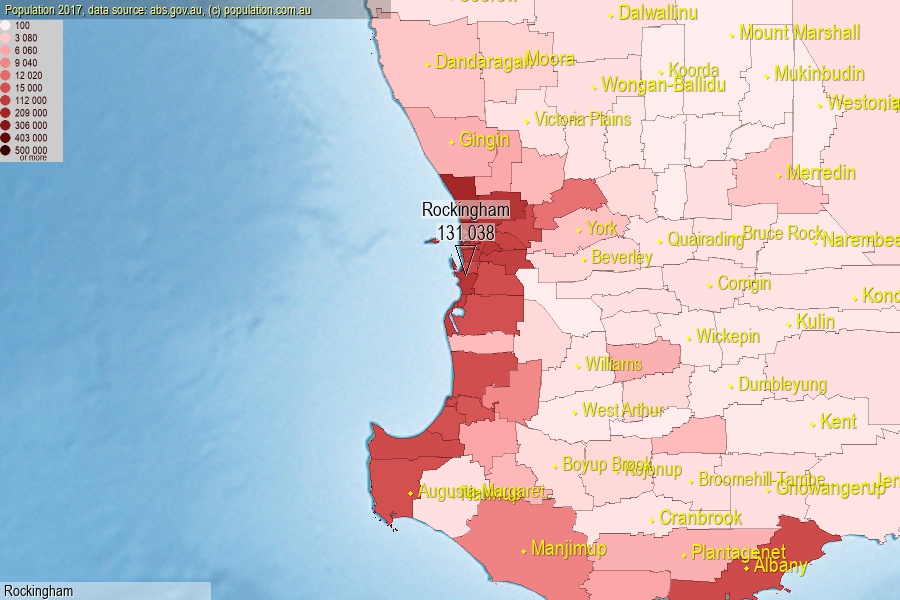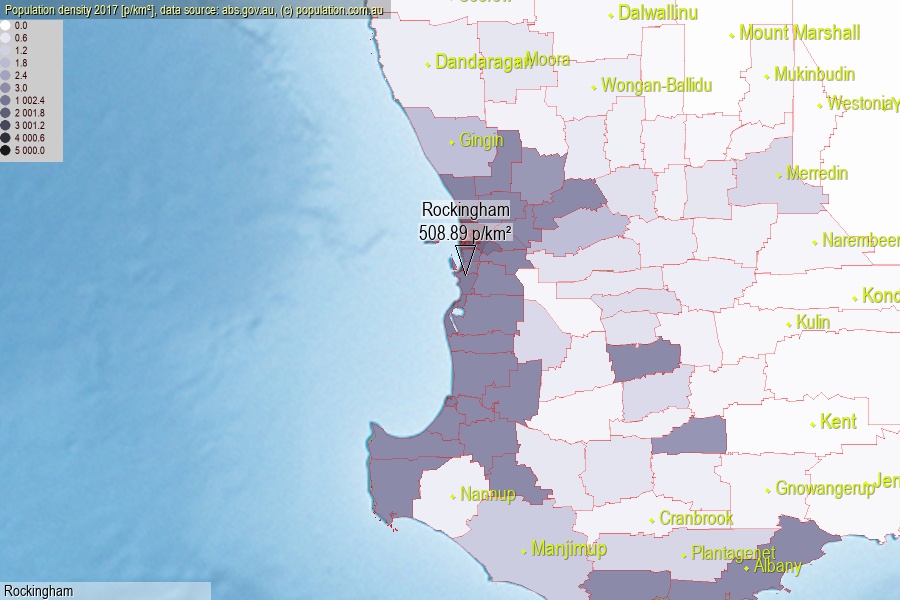 population.com.au
population.com.auLast official estimated population of Rockingham City (as Local Government Area) was 131 038 people (on 2017-06-30)[2]. This was 0.53% of total Australian population and 5.056% of WA population. Area of Rockingham is 257.50 km², in this year population density was 508.89 p/km² . If population growth rate would be same as in period 2016-2017 (+1.59%/yr), Rockingham population in 2025 would be 148 619. [0]



Click to enlarge. Rockingham is located in the center of the images.
Population [people], population density [p./km²] and population change [%/year] [2]
[1996-2001] +3.78 %/Y
[2001-2002] +2.18 %/Y
[2002-2003] +2.53 %/Y
[2003-2004] +3.15 %/Y
[2004-2005] +3.45 %/Y
[2005-2006] +4.94 %/Y
[2006-2007] +5.98 %/Y
[2007-2008] +4.63 %/Y
[2008-2009] +4.28 %/Y
[2009-2010] +4.26 %/Y
[2010-2011] +4.28 %/Y
[2011-2012] +4.57 %/Y
[2012-2013] +4.27 %/Y
[2013-2014] +3.13 %/Y
[2014-2015] +2.42 %/Y
[2015-2016] +2.36 %/Y
[2016-2017] +1.59 %/Y
[0] Calculated with linear interpolation from officially estimated population
[1] Read more about LGA and Australian Statistical Geography Standard (ASGS) on abs.gov.au
[2] Population data from Australian Bureau of Statistics (Population and density: 2017; change: 2016-2017)
[3] Digital Boundaries: Australian Statistical Geography Standard (ASGS) 2016.